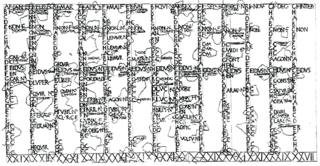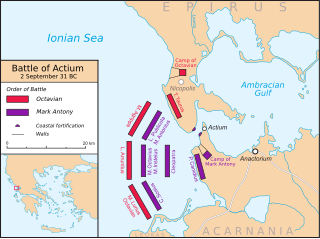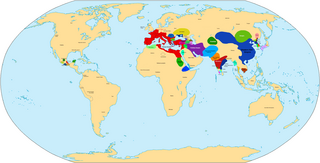Births
This section is empty.You can help by adding to it.(October 2013) |
| Millennium: | 1st millennium BC |
|---|---|
| Centuries: | |
| Decades: | |
| Years: |
| 693 BC by topic |
| Politics |
|---|
| Categories |
| Gregorian calendar | 693 BC DCXCII BC |
| Ab urbe condita | 61 |
| Ancient Egypt era | XXV dynasty, 60 |
| - Pharaoh | Shebitku, 15 |
| Ancient Greek era | 21st Olympiad, year 4 |
| Assyrian calendar | 4058 |
| Balinese saka calendar | N/A |
| Bengali calendar | −1285 |
| Berber calendar | 258 |
| Buddhist calendar | −148 |
| Burmese calendar | −1330 |
| Byzantine calendar | 4816–4817 |
| Chinese calendar | 丁亥年 (Fire Pig) 2004 or 1944 — to — 戊子年 (Earth Rat) 2005 or 1945 |
| Coptic calendar | −976 – −975 |
| Discordian calendar | 474 |
| Ethiopian calendar | −700 – −699 |
| Hebrew calendar | 3068–3069 |
| Hindu calendars | |
| - Vikram Samvat | −636 – −635 |
| - Shaka Samvat | N/A |
| - Kali Yuga | 2408–2409 |
| Holocene calendar | 9308 |
| Iranian calendar | 1314 BP – 1313 BP |
| Islamic calendar | 1354 BH – 1353 BH |
| Javanese calendar | N/A |
| Julian calendar | N/A |
| Korean calendar | 1641 |
| Minguo calendar | 2604 before ROC 民前2604年 |
| Nanakshahi calendar | −2160 |
| Thai solar calendar | −150 – −149 |
| Tibetan calendar | 阴火猪年 (female Fire-Pig) −566 or −947 or −1719 — to — 阳土鼠年 (male Earth-Rat) −565 or −946 or −1718 |
The year 693 BC was a year of the pre-Julian Roman calendar. In the Roman Empire, it was known as year 61 Ab urbe condita . The denomination 693 BC for this year has been used since the early medieval period, when the Anno Domini calendar era became the prevalent method in Europe for naming years.
This section is empty.You can help by adding to it.(October 2013) |
The Julian calendar, proposed by Julius Caesar in 708 Ab urbe condita (AUC) (46 BC), was a reform of the Roman calendar. It took effect on 1 January 709 AUC (45 BC), by edict. It was designed with the aid of Greek mathematicians and Greek astronomers such as Sosigenes of Alexandria.

The Roman calendar was the calendar used by the Roman kingdom and republic. The term often includes the Julian calendar established by the reforms of the dictator Julius Caesar and emperor Augustus in the late 1st century BC and sometimes includes any system dated by inclusive counting towards months' kalends, nones, and ides in the Roman manner. The term usually excludes the Alexandrian calendar of Roman Egypt, which continued the unique months of that land's former calendar; the Byzantine calendar of the later Roman Empire, which usually dated the Roman months in the simple count of the ancient Greek calendars; and the Gregorian calendar, which refined the Julian system to bring it into still closer alignment with the tropical year.

Year 31 BC was either a common year starting on Tuesday, Wednesday or Thursday or a leap year starting on Tuesday or Wednesday of the Julian calendar and a common year starting on Tuesday of the Proleptic Julian calendar. At the time, it was known as the Year of the Consulship of Antonius and Octavianus. The denomination 31 BC for this year has been used since the early medieval period, when the Anno Domini calendar era became the prevalent method in Europe for naming years.
Year 12 BC was either a common year starting on Saturday, Sunday or Monday or a leap year starting on Sunday of the Julian calendar and a common year starting on Friday of the Proleptic Julian calendar. At the time, it was known as the Year of the Consulship of Messalla and Quirinius. The denomination 12 BC for this year has been used since the early medieval period, when the Anno Domini calendar era became the prevalent method in Europe for naming years.
Year 48 BC was a year of the pre-Julian Roman calendar. At the time, it was known as the Year of the Consulship of Caesar and Vatia. The denomination 48 BC for this year has been used since the early medieval period, when the Anno Domini calendar era became the prevalent method in Europe for naming years.

AD 1 (I), 1 AD or 1 CE is the epoch year for the Anno Domini calendar era. It was the first year of the Common Era (CE), of the 1st millennium and of the 1st century. It was a common year starting on Saturday or Sunday, a common year starting on Saturday by the proleptic Julian calendar, and a common year starting on Monday by the proleptic Gregorian calendar. In its time, year 1 was known as the Year of the Consulship of Caesar and Paullus, named after Roman consuls Gaius Caesar and Lucius Aemilius Paullus, and less frequently, as year 754 AUC within the Roman Empire. The denomination "AD 1" for this year has been in consistent use since the mid-medieval period when the anno Domini (AD) calendar era became the prevalent method in Europe for naming years. It was the beginning of the Christian/Common era. The preceding year is 1 BC; there is no year 0 in this numbering scheme. The Anno Domini dating system was devised in AD 525 by Dionysius Exiguus.
The year 586 BC was a year of the pre-Julian Roman calendar. In the Roman Empire, it was known as year 168 Ab urbe condita. The denomination 586 BC for this year has been used since the early medieval period, when the Anno Domini calendar era became the prevalent method in Europe for naming years.
Year 13 BC was either a common year starting on Friday, Saturday or Sunday or a leap year starting on Friday or Saturday of the Julian calendar and a leap year starting on Wednesday of the Proleptic Julian calendar. At the time, it was known as the Year of the Consulship of Nero and Varus. The denomination 13 BC for this year has been used since the early medieval period, when the Anno Domini calendar era became the prevalent method in Europe for naming years.
Year 61 BC was a year of the pre-Julian Roman calendar. At the time it was known as the Year of the Consulship of Calpurnianus and Messalla. The denomination 61 BC for this year has been used since the early medieval period, when the Anno Domini calendar era became the prevalent method in Europe for naming years.
Year 69 BC was a year of the pre-Julian Roman calendar. At the time it was known as the Year of the Consulship of Hortalus and Metellus. The denomination 69 BC for this year has been used since the early medieval period, when the Anno Domini calendar era became the prevalent method in Europe for naming years.

Year 250 BC was a year of the pre-Julian Roman calendar. At the time it was known as the Year of the Consulship of Regulus and Longus. The denomination 250 BC for this year has been used since the early medieval period, when the Anno Domini calendar era became the prevalent method in Europe for naming years.
Year 30 BC was either a common year starting on Wednesday, Thursday or Friday or a leap year starting on Thursday of the Julian calendar and a common year starting on Wednesday of the Proleptic Julian calendar. At the time, it was known as the Year of the Consulship of Octavian and Crassus. The denomination 30 BC for this year has been used since the early medieval period, when the Anno Domini calendar era became the prevalent method in Europe for naming years.
Year 25 BC was either a common year starting on Wednesday, Thursday or Friday or a leap year starting on Wednesday or Thursday of the Julian calendar and a leap year starting on Tuesday of the Proleptic Julian calendar. At the time, it was known as the Year of the Consulship of Augustus and Silanus. The denomination 25 BC for this year has been used since the early medieval period, when the Anno Domini calendar era became the prevalent method in Europe for naming years.

Year 19 BC was either a common year starting on Thursday, Friday or Saturday or a leap year starting on Thursday or Friday of the Julian calendar and a common year starting on Wednesday of the Proleptic Julian calendar. At the time, it was known as the Year of the Consulship of Saturninus and Vespillo. The denomination 19 BC for this year has been used since the early medieval period, when the Anno Domini calendar era became the main method in Europe for naming years.

Year 200 BC was a year of the pre-Julian Roman calendar. At the time it was known as the Year of the Consulship of Maximus and Cotta. The denomination 200 BC for this year has been used since the early medieval period, when the Anno Domini calendar era became the prevalent method in Europe for naming years.
Year 197 BC was a year of the pre-Julian Roman calendar. At the time it was known as the Year of the Consulship of Cethegus and Rufus. The denomination 197 BC for this year has been used since the early medieval period, when the Anno Domini calendar era became the prevalent method in Europe for naming years.
Year 230 BC was a year of the pre-Julian Roman calendar. At the time it was known as the Year of the Consulship of Barbula and Pera. The denomination 230 BC for this year has been used since the early medieval period, when the Anno Domini calendar era became the prevalent method in Europe for naming years.
Year 234 BC was a year of the pre-Julian Roman calendar. At the time it was known as the Year of the Consulship of Albinus and Ruga. The denomination 234 BC for this year has been used since the early medieval period, when the Anno Domini calendar era became the prevalent method in Europe for naming years.
A calendar era is the period of time elapsed since one epoch of a calendar and, if it exists, before the next one. For example, the Gregorian calendar numbers its years in the Western Christian era.
The year zero does not exist in the Anno Domini (AD) system commonly used to number years in the Gregorian calendar and in its predecessor, the Julian calendar. In this system, the year 1 BC is followed by AD 1. However, there is a year zero in astronomical year numbering and in ISO 8601:2004, as well as in all Buddhist and Hindu calendars.
| This BC year article is a stub. You can help Wikipedia by expanding it. |